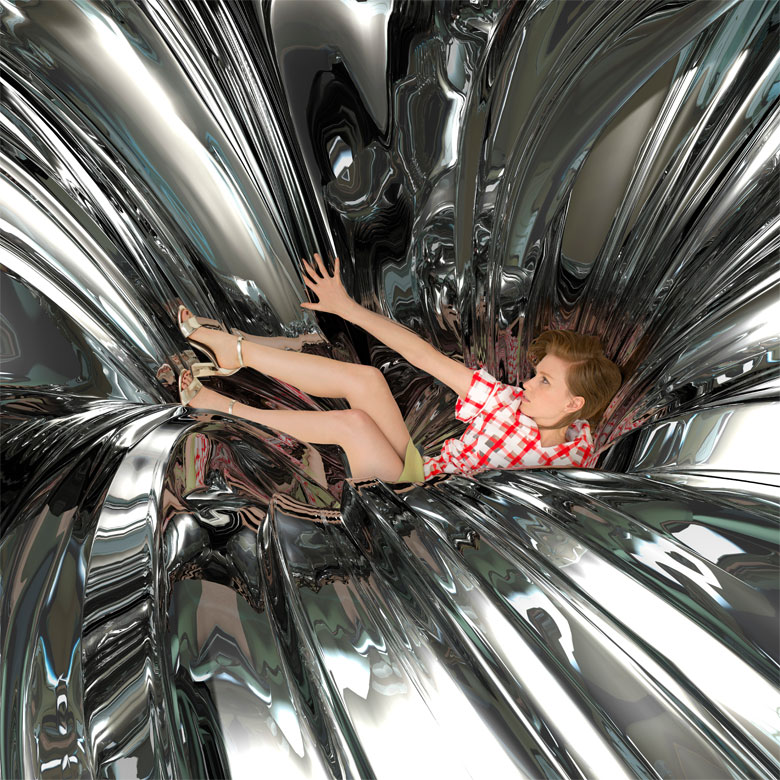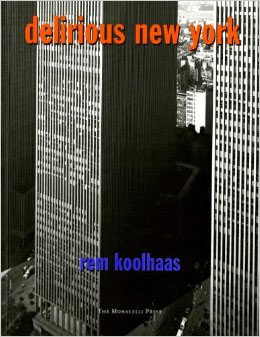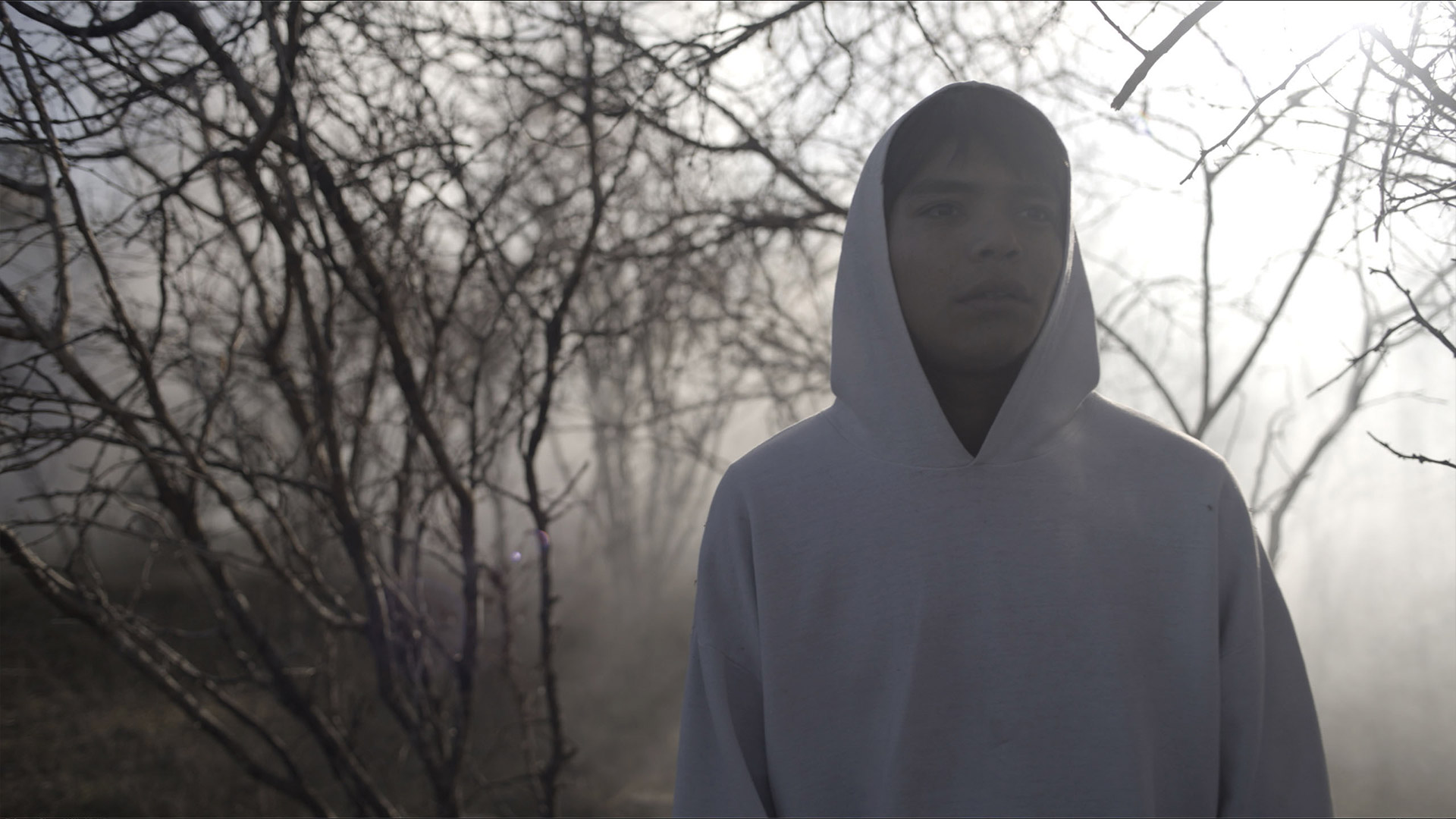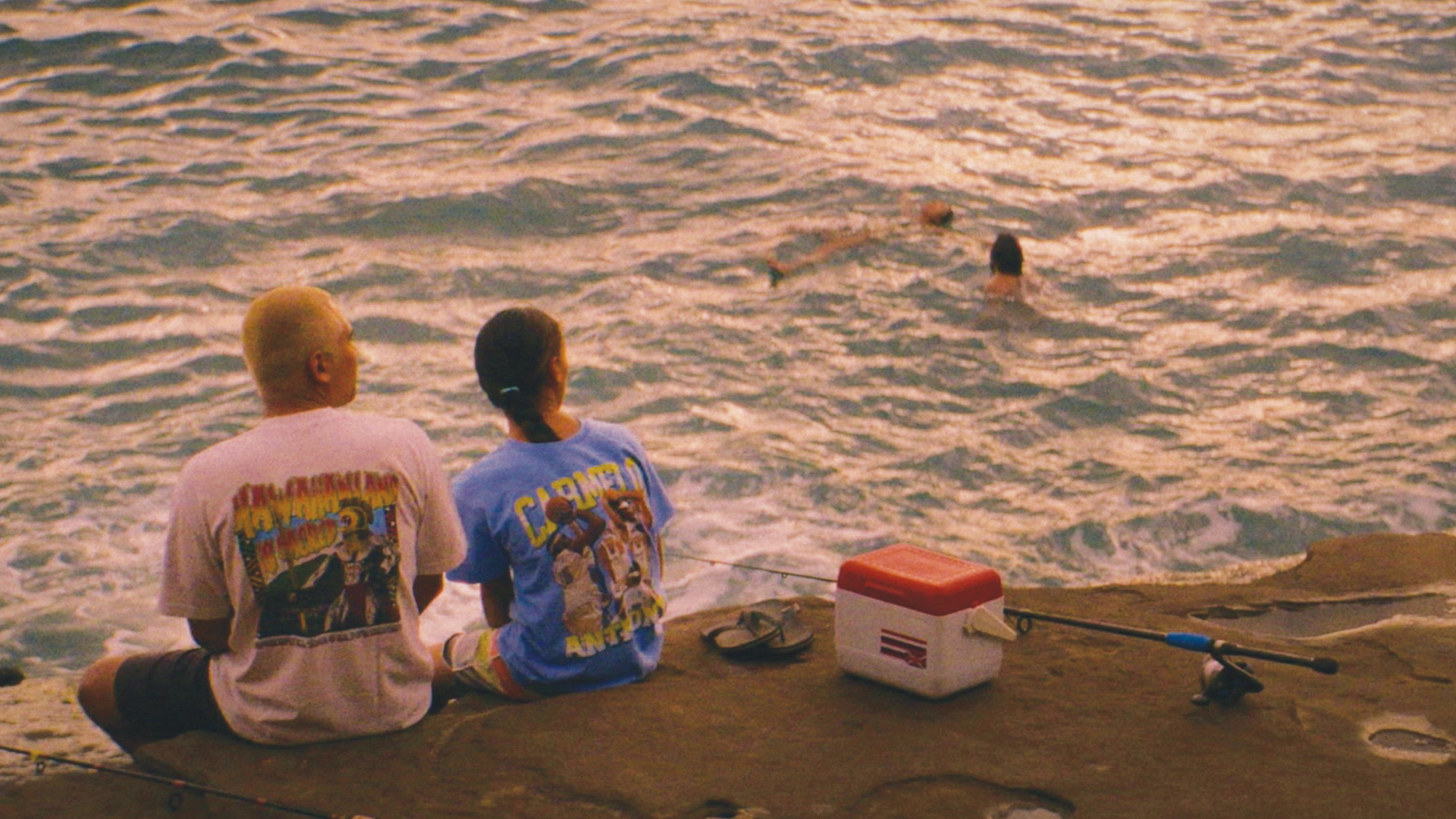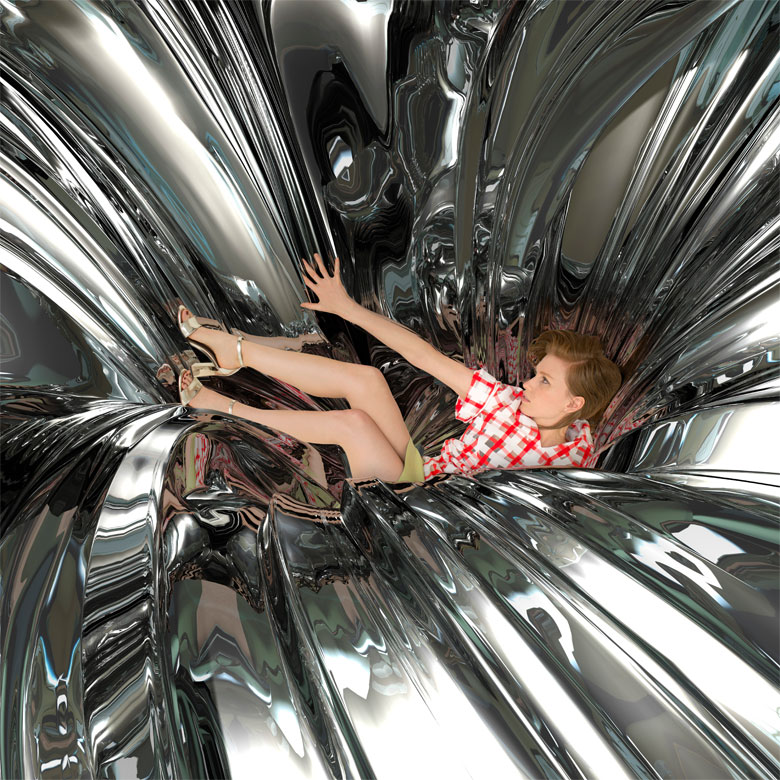
Feature Text by Ian King; Original Interview by Ingmar Carlson
That tricky balance is surely due, at least in part, to Mesirow’s continuous work with producer Van Rivers (Fever Ray, Blonde Redhead) to make Interiors. On partnering with Rivers on the new record, Mesirow says, “We both had things we wanted to accomplish that might not have been completely in line with each other all the time — but I think we also both have respect for the other one’s talents, and his talents are different from mine, in a way. He’s a much more organized person than I am; he’s much better at getting to the point of things than I am. He’s such a minimalist, it’s crazy — not just as a producer, but in life. He’ll, like, get a rip in his favorite t-shirt and he’ll just throw it away…”
“… He’s just so serious about not having crap around, hands down, whereas I can really be sort of a hoarder when it comes to my music,” she continues, laughing. “I like to really pack it in. I think I drove him crazy with that. He would throw a bunch of things away and then I’d fill that space up with more stuff… It’s funny because I would be so emotional about it, [like,] ‘You’re killing my idea!’ But then we’d listen to it a few more times and I’d realize, ‘You’re right; I like it better now.'”
Visualizing Interiors: A Collaborative Experience
What the pair came up with was distinct enough from Glasser’s previous work that creating an entirely new visual counterpart felt necessary. Mesirow’s passion for visual art comes through strongly with her music, and the visualizations that are created to correspond with it have almost with an “art school” sensibility, even though Mesirow has never attended art school herself. Reflecting on whether visual art exerts as much of an influence on her own work as other music, she admits, “I would even say more[so], but I don’t really know if that’s accurate. But I think that my aesthetic sense, as in where I want to go with music, is something that always comes from a visual place.”
“I’ve always been a super artistically-inclined person,” she explains, “and I guess I’m a visual person also in a non-artistic sense — like, I think I’m a visual learner, as they say; I always did better in geometry than in algebra. I have that type of brain when it comes to science and math; I was always someone who understood things better when there were lots of pictures.”
Mesirow grew up in an artistically-inclined household, with both of her parents being involved in music. She describes her mother as being more of a “visual” kind of musician; she is in a group called Human Sexual Response that experiments with “a lot of fun putting on wigs and stuff.” Her father, on the other hand, is an accomplished guitar player who leaned more toward the “audio” side of things. It’s easy to see why Mesirow believes that she came away with a combination of those traits. Her extended creative family also includes is the visual artist Tauba Auerbach, who Mesirow says has had a huge influence not just on Glasser, but on her life in general. “I feel like I’ve just learned so much from being around her,” she explains.
Glasser – “Design” Music Video
To help adapt the sound of Interiors for the eyes of consumers, Mesirow enlisted the help of video artist Jonathan Turner, who is a part of the performance art group Yemenwed.
“I went to him fairly early on and told him I felt that my last record — even though I liked all the visuals that went with it — didn’t feel like it explained anything about what I was doing or going for on the record, and that I wanted to start the process of making the visuals really early on Interiors because it was important to me that they were really, really good and well thought-out,” explains Mesirow. She and turner began discussions as far as late 2012, and the “Design” video was shot in early February of 2013. By her own admission, it has been a long process, though she ultimately believes that starting early has positively informed the direction of the finished product.
“I know she wanted her album to be a concept album,” says Turner, recalling his first discussions with Mesirow about her goals for Interiors. “We actually made a lot of stuff before she even wrote a lot of the songs…”
One shared influence between Turner and Mesirow was Hipgnosis, the famous English art design group that started in the late 1960s. Hipgnosis were film and art school students when they began designing record covers for rock bands. Using techniques of photo manipulation to create surreal and elaborate images, their work quickly became sought after. Their first was for Pink Floyd, and they eventually went on to do covers for most every glam and prog rock band from that era that one can think of. While Mesirow and Jonathan took inspiration from the group, they took note not to copy them.
“We wanted to make a classic album where the music and the visuals have a consistency — that was the general idea,” explains Turner.
Though the two saw pretty much eye-to-eye, getting to the final result came with some slight complications. “The issue was when we got to the cover art and the label said, ‘She has to be on the cover,’ you know… They wanted her to be more recognizable and look like she is who she is, which is different than, ‘We wanna make this creative conceptual art piece.’ That was a little bit tricky, but I think we figured out a way to make it happen…” says Turner. “I mean, yeah, I know a lot of musicians and I feel like it’s not that common these days to have a ‘concept album’; it almost seems like a bad word or a bad idea.”
Architecting a Concept Album
Rem Koolhaas – Delirious New York
Since its original publication in 1978, Delirious New York has attained mythic status… Rem Koolhaas’s celebration and analysis of New York depicts the city as a metaphor for the incredible variety of human behavior. At the end of the nineteenth century, population, information, and technology explosions made Manhattan a laboratory for the invention and testing of a metropolitan lifestyle — “the culture of congestion” — and its architecture.
BUY ON AMAZON
—
Michelangelo Antonioni – Red Desert Clip
“Perhaps the most extraordinary and riveting film of Antonioni’s entire career; and correspondingly impossible to synopsize. Monica Vitti is an electronics engineer’s neurotic wife, wandering in bewilderment through a modern industrial landscape (the film is set in Ravenna) [that] Antonioni has colored in the most startling and original way imaginable. The film is an aesthetic feast, but don’t let that distract you from the haunting intricacy of the plot and the performances…” – David Pirie, Time Out
When Mesirow first approached Turner about Interiors, she explained that she thought it was about architecture. In response, Turner suggested that she read Rem Koolhaas’ Delirious New York, a book which was something of a “standard read” in Turner’s Industrial Design classes at the Rhode Island School of Design (RISD). The book, as Mesirow puts it, is “about the nature of the city, having all these skyscrapers and what they are from their inception, which is basically just a multiplication of the plot of land that they’re on…”
She goes on to say that it is a rather cool idea when broken down into such terms — and that, “It’s really pretty futuristic, in a way, thinking about the realm of real estate vertically, rather than horizontally.”
Before Turner’s suggestion, however, Mesirow didn’t have a specific relationship to Koolhaas’ work. “I guess I was saying to Jon that I’m really inspired by the look of midtown Manhattan… there’s so much glass…” she muses. “There’s all this sort of inhabited and uninhabited space — a point where people can be totally isolated but at the same time happy and around lots of other people…”
“The way [Delirious New York] came up with Cameron… was [that] the original cover of the book that came out in the ’70s or ’80s… we were just talking about buildings having some kind of sexual connotation or some human qualities, and that illustration jumped in my head immediately,” Turner recalls. “When we were talking, Cameron didn’t tell me too much about New York’s effects on everything, or influencing the album — it was about really specific experiences — but I can see how when she got into that book it sort of opened up all that stuff… It’s such a great analysis of New York, and of cities generally, and the modern idea versus reality.”
Taking the analysis one step further, Mesirow draws parallels between cities and the people that inhabit them, which includes herself. References to space and how they play in with her own being are found throughout the record: “Landscape” closes by touching on the restrictions of walls surrounding a changing person; she crosses vast distances in “Dissect” and “Divide”; and “Windows I”, “Windows II”, and “Windows III” hint at architecture with just their names alone.
“What I came to understand through that process [of] my reading of Delirious New York is that this record is about myself as a structure — as a structure that I’m imposing on myself, that society imposes on me — and the way that I relate to the structures, or people, around me. And I just thought that the skyscraper was such a brilliant metaphor for that, because it’s a giant monolith of intricacy that you can never fully know every corner of, just as you can never know all the deep, far reaches of a person’s existence. Even I don’t know my own furthest, deepest, darkest feelings, necessarily, but they’re covered up by a powerful facade. I guess that’s the relationship between Rem Koolhaas and Glasser’s Interiors…”
Turner, too, found similar inspiration in Mesirow’s recommendation of Michelangelo Antonioni’ s film, Red Desert.
“That to me was really inspiring,” Turner explains, “because it’s so bleak, and it’s really about this woman who has these panic attacks, and there’s all this industrial kind of carnage around her — and [there’s] also this really slick modernism that’s creeping in. And that really boiled it down for me — what I thought Cameron was going for — and maybe as Red Desert was for me, I think Delirious New York was for her.”
The Contradictory States of Being in “Shape” & “Design”
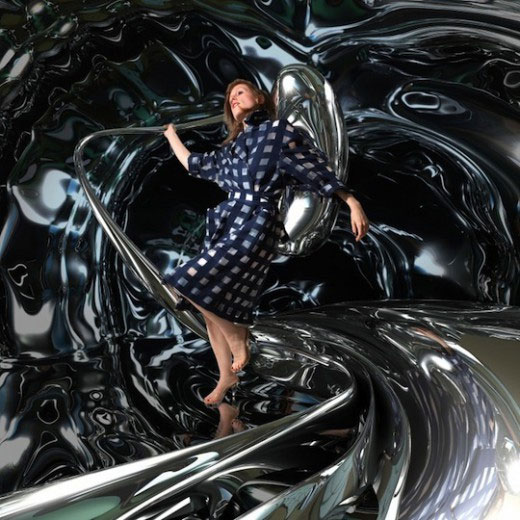 On Interiors, there are two opposing states of being that Mesirow expresses — one of “being inside and needing to get out”, and one of “being outside and needing to get in”. Also at the heart of those polarities is the feeling of “desire” — the need to be somewhere or away from somewhere, and the forces that keep the individual unstable as they push and pull one way to the other. In the videos for Interiors‘ first single, “Design”, and the just-released follow-up, “Shape”, that desire is represented by a fluid silver metallic presence that is central to both. In “Design”, it is an amorphous but contained object that floats in the center of the frame; in “Shape”, that same object seems to have swallowed the whole of existence, including, ultimately, our heroine.
On Interiors, there are two opposing states of being that Mesirow expresses — one of “being inside and needing to get out”, and one of “being outside and needing to get in”. Also at the heart of those polarities is the feeling of “desire” — the need to be somewhere or away from somewhere, and the forces that keep the individual unstable as they push and pull one way to the other. In the videos for Interiors‘ first single, “Design”, and the just-released follow-up, “Shape”, that desire is represented by a fluid silver metallic presence that is central to both. In “Design”, it is an amorphous but contained object that floats in the center of the frame; in “Shape”, that same object seems to have swallowed the whole of existence, including, ultimately, our heroine.
Discussing how the two videos relate to one another, Turner notes that, “Where ‘Shape’ was about this environment changing, ‘Design’ was essentially the inverse: the environment’s not changing; it’s just this object [that’s changing].”
Turner’s idea for this quicksilver-like object originally came out of furniture designs he came up with in collaborations with another architect.
“For me, concrete and chrome are really the signature manufacturing materials for developing this technique to get this perfect, fluidly manufactured object,” he explains. “Cameron brainstormed this object that comes in and almost attack her, not aggressively but as an alien object. I think originally she thought it would be some sort of energy object… but I thought that might be too difficult to really make it look amazing. Then I started thinking about the sculptor Brancusi — his sculptures are really organic but they’re also really objects, design almost. I feel like he really inspired designers, using what became a more modern method.”
Whatever its origins or intentions, the object inspires a range of responses and interpretations.
“My mom said when she saw the video [for ‘Design’] she felt like the silvery thing represented my art,” says Mesirow, “and that the whole scene depicted the relationship between me and a thing that was embodying my creativity, or something like that. But I dunno — as we get deeper into the album, I think that silver ‘essence’ is basically the aesthetic theme of the whole record, literally and figuratively representing the ungraspable nature of life and the inherent instability of everything. In that video in particular, it has to do with a feeling of lust and desire for an object (whether it’s a human object or something else). It deals with that human tendency to get carried away with feelings of desire about something to the point where it becomes all about the feeling and not about the thing.”
“Our lust or desire becomes more about the feeling as the feeling takes over our consciousness rather than continuing to think about the thing that got you aroused in the first place…” Mesirow continues. “That’s what that sculpture, or whatever you want to call it, represents… It’s kind of like how you can never take a picture of a sunset that accurately or adequately represents exactly what you experienced, that feeling you had looking at that beautiful sunset. Those things, those feelings of desire, are elusive and beyond our grasp. The feeling of desire overtakes the actual feeling of ecstasy that they invoke.”
Glasser – “Shape” Music Video
Turner states that the “Shape” video also has different moments of one’s experiences with uncertainty, and other moments of having the willpower to overcome that uncertainty. It goes in and out of different phases — again reflecting the sentiments of “being on the inside and trying to get out” and “being on the outside and trying to get in”.
“[‘Shape’] basically takes place in a house on an island. It’s kind of literal to what the song itself sets up; it’s a manifestation of her apartment,” Turner describes. “The way she describes her apartment to me is as the place of security, but the idea is that she’s trying to leave this place of security and it won’t let her leave; it’s trying to help her, even coddle her, but also restrains her. So the video is kind of her dealing with this environment trying to do this to her, and then at some point, it’s just trying to keep her and entice her, and she just won’t have it. In the end, she decides doesn’t want to bite the apple. There’s this emotional wave at the end of the song that sort of overtakes her.”
Watching that “silver essence” play a sort of co-starring role in those videos, another theme comes to the fore of Interiors: fluidity. Not only that, but a reflective fluidity. Mesirow confirms that this was part of the original idea.
“I think that regardless of structure, personalities are completely fluid,” she says. “That’s what ‘change of heart’ is all about. We are fluid, and fluidity is all around us. Markets rise and fall… and the significance of these structures changes depending on what’s happening. It’s all about fluidity.”
Ω

